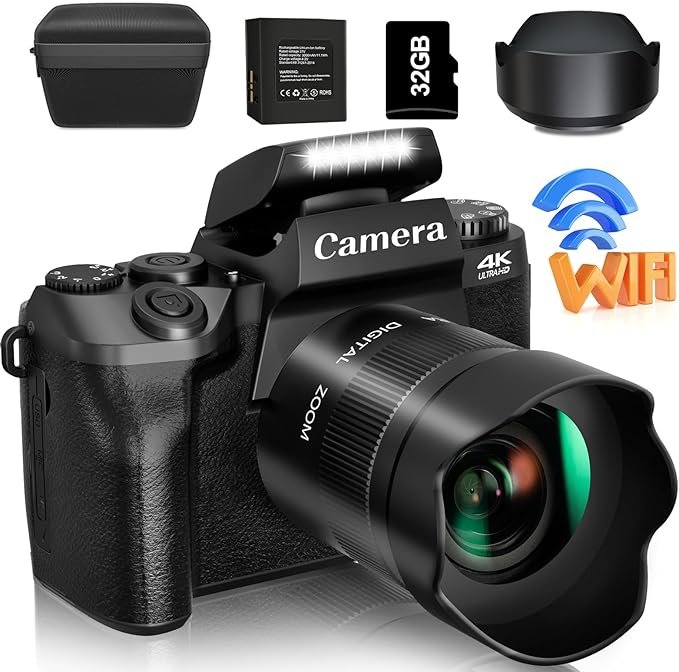Still life photography is one of the most artistic and versatile genres in the world of photography. From classic paintings to modern Instagram feeds, this style has consistently captivated audiences with its ability to transform everyday objects into compelling visual stories. Whether you’re a beginner or an experienced photographer, understanding still life photography can elevate your creativity and technical skills.
Table of Contents
In this comprehensive guide, we’ll explore what still life photography is, the different types, key techniques, equipment recommendations, and expert tips to help you create your own masterpiece.
Understanding Still Life Photography
At its core, still life photography involves capturing inanimate subjects — often ordinary objects — in a carefully arranged composition. The photographer has full control over the lighting, placement, and styling of the scene, allowing for a wide range of creative expression.
The term “still life” originates from painting, where artists would depict scenes of food, flowers, vases, and other non-living subjects. The photographic version adopts similar principles but adds the unique elements of lens choice, aperture control, and digital post-processing.
The Purpose of Still Life Photography
Unlike action or portrait photography, still life focuses on static elements. The purpose is not just to record how objects look, but to create mood, tell a story, or emphasize design and form. It’s often used in commercial and fine art photography, including product shots, food photography, and editorial imagery.
This genre is perfect for photographers who enjoy working at their own pace, experimenting with lighting setups, and fine-tuning every aspect of their shot.
Saneen Digital Camera
Types of Still Life Photography
There are several sub-genres within still life photography, each with its own style and objective:
1. Tabletop Still Life
This is the most common form, where objects are arranged on a table or flat surface. It includes everything from fruit bowls and flower arrangements to antiques and collectibles.
2. Product Photography
A commercially focused sub-genre, product photography involves capturing products like cosmetics, electronics, or fashion items. The goal is to present the item in the most appealing and clear way, often for marketing or e-commerce.
3. Food Photography
Food photography overlaps with still life, where the composition highlights dishes, ingredients, or drinks. This type of photography requires particular attention to texture, color, and freshness.
4. Conceptual Still Life
This creative and often surreal sub-genre aims to convey a message or theme. Photographers might use symbolic objects, unusual juxtapositions, or thought-provoking compositions.
5. Flat Lay Photography
Popularized by social media, flat lay photography involves photographing objects arranged neatly on a flat surface, shot from directly above. It’s commonly used in lifestyle and fashion blogging.
Essential Equipment for Still Life Photography
You don’t need a studio full of gear to get started with still life photography, but having the right tools can help you achieve professional-looking results.
1. Camera
A DSLR or mirrorless camera is ideal, but even a smartphone can work for simple shots. The key is manual control over focus, exposure, and depth of field.
2. Lenses
- Prime lenses with wide apertures (like a 50mm f/1.8) are great for sharp, detailed images.
- Macro lenses are useful for close-up shots of small items, revealing intricate textures.
3. Tripod
Using a tripod ensures sharp images and allows for consistency when experimenting with different compositions or lighting.
4. Lighting
Natural light is a great starting point, but continuous lights or strobes give you greater control. Use softboxes or reflectors to diffuse shadows and highlight your subject.
5. Backdrops and Surfaces
Invest in a few neutral-colored backdrops, wood planks, or marble sheets to give your images variety and texture.
Key Techniques in Still Life Photography
Mastering still life photography requires a combination of technical know-how and artistic intuition. Here are the most important techniques to keep in mind:
1. Composition
- Use the rule of thirds, leading lines, and framing to create balanced, engaging shots.
- Think about negative space and how it affects the overall mood.
- Arrange objects in a way that guides the viewer’s eye through the scene.
2. Lighting
- Direction and quality of light can dramatically change the mood.
- Side lighting reveals texture and depth.
- Backlighting adds drama and highlights transparency (ideal for glass or drinks).
- Use bounce cards and reflectors to soften harsh shadows.
3. Color Harmony
Choose objects with complementary or analogous colors for pleasing visuals. Muted tones often work well for a minimalist look, while bold colors add energy and vibrancy.
4. Texture and Detail
Textures like wood, fabric, or metal can make an image feel more tactile and alive. Pay attention to small details — a speck of dust or smudge can ruin an otherwise perfect shot.
5. Styling and Props
Styling is crucial in still life. Props should enhance, not distract from, your main subject. Think about themes, storylines, and seasonal elements when choosing props.
Creative Tips to Improve Your Still Life Photography
- Tell a story: Don’t just place random objects — think about a narrative or emotion you want to convey.
- Use symmetry or asymmetry: Both can work beautifully depending on the subject.
- Experiment with perspective: Try shooting from above, at eye level, or from a low angle.
- Use negative space intentionally: It can add elegance and sophistication.
- Edit thoughtfully: Post-processing can enhance colors, adjust lighting, and remove imperfections.
The Role of Post-Processing
Editing is an essential part of still life photography. Use tools like Adobe Lightroom or Photoshop to:
- Adjust exposure and white balance
- Fine-tune contrast and saturation
- Remove dust spots or background flaws
- Sharpen details for a polished look
Even subtle changes can elevate an image from good to great.
Why Still Life Photography is Great for Beginners
- Complete control: Unlike portrait or street photography, you’re not relying on a model or changing environment.
- Cost-effective: You can start with items you already have at home.
- Practice fundamentals: It helps you improve your understanding of lighting, composition, and camera settings.
- Creative freedom: There’s no limit to the scenes you can create, making it a rewarding artistic outlet.
FAQs About Still Life Photography
Q1: What camera settings should I use for still life photography?
A: Use a low ISO (100–200) to avoid noise, a narrow aperture (f/8–f/16) for greater depth of field, and a slow shutter speed if using a tripod. Always shoot in manual mode for full control.
Q2: Can I use natural light for still life photography?
A: Yes! Natural light from a window can create soft, beautiful effects. Use white curtains to diffuse the light and avoid harsh shadows.
Q3: Do I need expensive props?
A: Not at all. Everyday objects like cups, books, fruits, or candles can be transformed into artistic subjects with the right setup and lighting.
Q4: How can I make my still life images more interesting?
A: Add layers of texture, use storytelling elements, play with color contrasts, or introduce movement using things like steam or flowing fabrics.
Q5: Is still life photography good for a photography portfolio?
A: Absolutely. It demonstrates your skill in lighting, composition, and attention to detail — all of which are impressive to potential clients or employers.
Final Thoughts
Still life photography is more than just taking pictures of objects — it’s an art form that lets you explore creativity, refine your technical skills, and build a personal style. Whether you’re capturing a rustic fruit bowl or styling a commercial product shoot, the possibilities are endless.
Start simple, experiment often, and most importantly, enjoy the process. With patience and practice, you’ll find that still life photography offers a deeply satisfying creative journey — one frame at a time.

